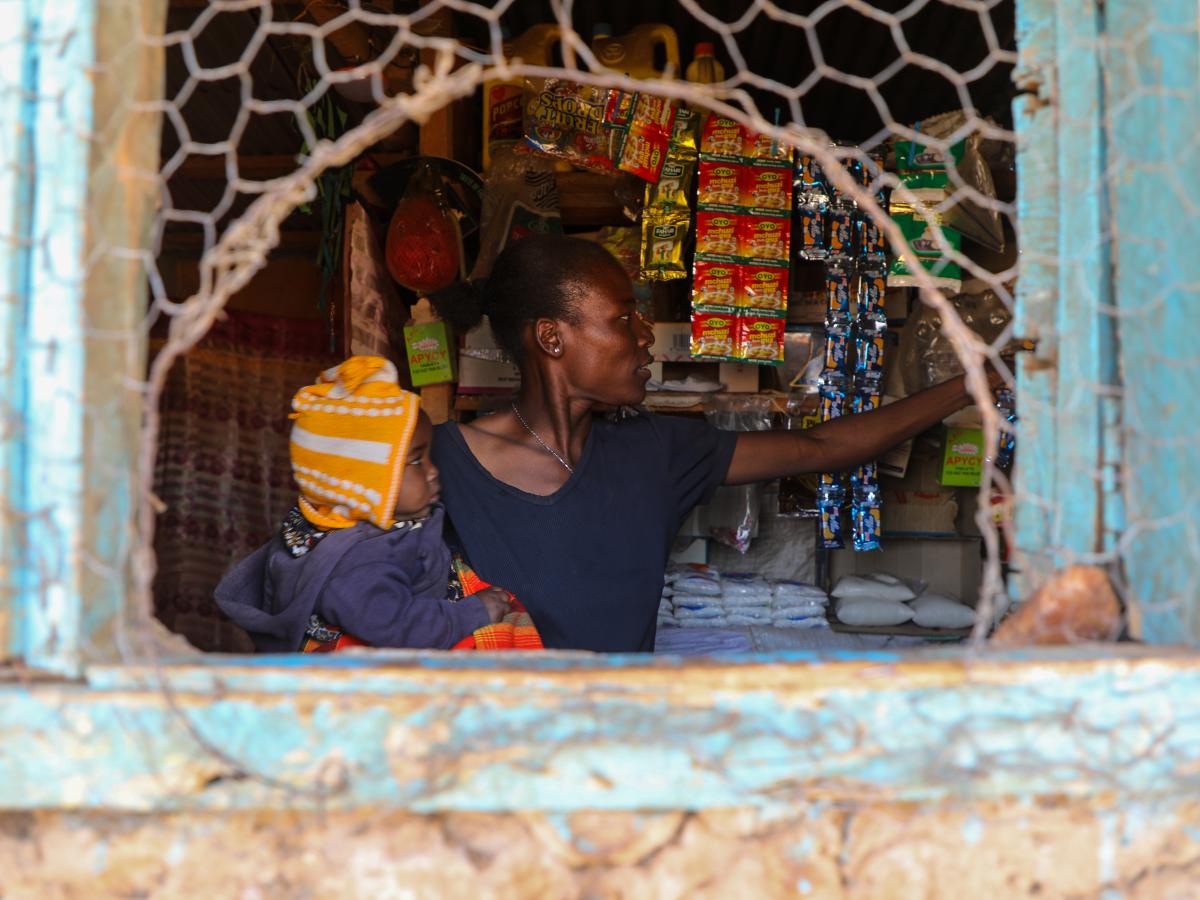Graduating from despair to self reliance
Mary Imoit from Manyatta Zebra village in Ngaremara ward, Isiolo County, is a mother of two daughters: a four-year-old and a six-month-old. Her husband used to own livestock, but unfortunately the family lost all their animals in the recent prolonged drought.
Since September 2021, Kenya’s northern regions have received less than 30 percent of the previous average rainfall, having experienced the worst rainy seasons in decades. While drought is nothing new to the region, the scale and duration of the prolonged 2021-2023 drought in the Horn of Africa has been unprecedented.
This situation has had a major negative impact on the lives and livelihoods of communities in Kenya’s Arid and Semi-Arid Lands (ASALs). As a result, Mary’s husband had to travel to Isiolo town in search of employment opportunities and now earns around KES 500 ($4) on the infrequent days that he finds work.
Before this drought, Mary and her husband would reared goats and sell them for KES 4,000 – 5,500 ($40-$55), when money was needed for food or school fees.
Given these challenges, Mary sought any opportunity to provide for her family. She was selected to participate in USAID Nawiri’s adapted nutrition graduation model as she had children under the age of 5.
In an effort to help families overcome acute poverty and malnutrition, the model is designed to address the many needs of very poor households vulnerable to acute malnutrition. It involves an integrated five-step suite of interventions, delivered in sequence, to help the extreme poor achieve sustainable livelihoods and better to help households meet their immediate needs. The 5 steps included: targeting, forming business savings groups, business skills and financial literacy training, providing small business start-up grants, and business and business savings groups mentoring.
Beyond meeting those acute needs, USAID Nawiri looks for long-term impact, educating households on health and nutrition, as well as supporting families to budget their money through saving groups and business mentorship. Mary was selected for the graduation model through a detailed community engagement process involving community discussions, community mapping and selection based on age, gender and the ages of her children. Mary then received a KES 5,000 (USD $34) monthly cash transfer, for six-months. She was able to use these funds to feed her family during the prolonged emergency period, and to pay off basic debts.

Mary Imoit is managing her small retail shop located in Manyatta Zebra village, Isiolo County.
Anthony Nyandiek/USAID Nawiri
Mary also joined a savings and lending group, where she learned the discipline of saving money weekly and also received business training. She later started a small retail business to sell food items like maize flour, wheat flour, sugar and vegetables. Under USAID Nawiri’s integrated support, Mary has also been trained on ways to improve her children’s diets.
The drought had a major adverse impact on the livelihoods, income and food security of local communities. Mary experienced a decline in her ability to generate income through traditional means, such as livestock, agriculture or other forms of work. This reduction in income could have hindered her ability to afford basic necessities and provide for her family. The adverse consequences of the drought also led to reduced availability and access to nutritious food for Mary and her family. This resulted in insufficient meals, malnutrition, and compromised health, particularly among vulnerable members like children and the elderly.
For these reasons, Mary received a supplemental asset transfer to cover household food assistance. Mary also benefited from a three-month youth apprenticeship for dress-making, to learn to design and sew clothes for women and children. At the USAID Nawiri apprenticeship graduation ceremony in July 2023, Mary received a sewing machine and start-up materials for her tailoring business. She hopes to make tailoring her main source of income in future.
USAID Nawiri support
Mary’s story highlights the short-term relief and long-term empowerment that USAID Nawiri seeks to achieve. The model not only equipped Mary with the means to meet her family's immediate needs during the crisis but also fostered her economic self-sufficiency. Joining a savings and lending group further fortified her financial discipline and entrepreneurial acumen.
By providing her with training in dressmaking and then supporting her tailoring business through start-up materials, USAID Nawiri bolstered Mary's prospects for sustained income generation. Mary is testament to the potential of comprehensive interventions that address acute needs while nurturing long-term self-reliance. This highlights USAID Nawiri's overarching goal of sustainably reducing acute malnutrition in Isiolo County.

